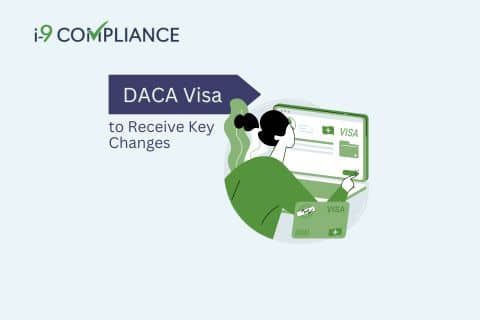DACA Visa to Receive Key Changes

The current administration has announced its intent to introduce new policies concerning the Deferred Action for Childhood Arrivals (DACA) program. According to the administration, these policies would streamline access to H-1B visas and other employment-based immigration pathways for DACA beneficiaries. Such changes could alleviate the delays and uncertainty surrounding temporary visa applications.
DACA beneficiaries and others who have graduated from an accredited university and received a job offer often struggle to enter the U.S. on a legal employment-based status. A core issue involves the need for a waiver of inadmissibility. This waiver allows them to acquire a temporary employment-based visa, but uncertainty and confusion often plague the process.
Due to previous lawful presences, the program could leave DACA beneficiaries and other participants inadmissible for extended lengths of time, such as ten years. This struggle typically leads to individuals applying for a D-3 waiver. This waiver is an inadmissibility waiver that permits “inadmissible” noncitizens to enter the U.S. legally. On a case-by-case basis, this waiver excuses grounds of inadmissibility under INA 212(d)(3)[1].
Unfortunately, interested parties cannot request a D-3 waiver in advance. This stipulation forces DACA beneficiaries and others to leave the U.S. without knowing how long they must wait to return. The process of a consular officer requesting a D-3 waiver and Customs and Border Protection choosing to grant it often takes months.
According to the newly announced changes, the State Department will provide thorough guidelines for consular officers when recommending waiver requests. These guidelines also encourage expedited review of these requests concerning nonimmigrant visa applications. These adjustments could enable beneficiaries to receive a waiver and the corresponding work visa more quickly.
The Department of Homeland Security (DHS) also released a Fact Sheet concerning D-3 waivers. According to the DHS, they will attempt to process these waivers quickly so that DACA recipients and others affected by delays will suffer less uncertainty. This document explains the intention to clarify and enhance the existing process to provide “U.S. employers increased confidence that they can hire the talent they need and that they will be able to quickly get to work.”
Many employers will likely welcome these changes. Until they become official, employers should focus on other documentary processes, such as the employment eligibility verification (Form I-9) process. This process has proven challenging for many due to the ever-changing regulations. One way to maintain compliance is by using an electronic I-9 management tool. This tool guides HR personnel through the process, securely stores digital forms and related documents, and offers an optional E-Verify integration.
Streamline your hiring process with an automated employment eligibility verification and ensure compliance today with I-9Compliance.